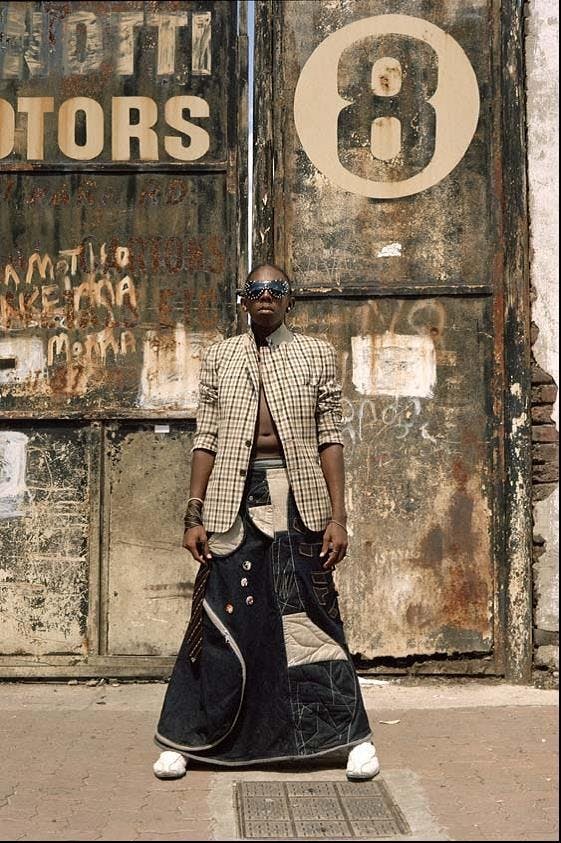Narcissister
(b. 1971)Wearing a mask that conceals her face, and working with humor and exaggeration, Narcissister employs caricature to investigate intersections of race, gender, and sexuality.
Biography
Born to a Sephardic Jewish mother and African American father, as a young person Narcissister was cognizant of how she failed the beauty standards that she encountered in the predominantly white environment in which she was raised in Southern California. These experiences shaped her art practice—she performs as an avatar, an anonymous representation of no woman in particular, and utilizes dance, installation, sculpture, and filmmaking.
While working as a window display designer to support herself as an artist, Narcissister first created her now signature mask from a mannequin display she repurposed. Additionally, her mother’s personal aesthetics and intellectual rigor had a profound impact on the artist’s practice— Narcissister attributes her “high-low” aesthetic to her. Narcissister obtained a BA in Afro-American studies at Brown University and has studied at institutions including the Alvin Ailey American Dance Theatre, New York City; the University of California, San Diego; and the Sorbonne, Paris. She has had solo exhibitions at Artpace San Antonio, Texas (2019) and PARTICIPANT INC, New York (2018); and has performed at the Centre Pompidou, Paris (2020); Performa, New York City (2017); and Danspace Project, New York City (2016). Her first feature film, Narcissister Organ Player, premiered at Sundance 2018, followed by screenings at SXSW 2018. Her work has been featured in multiple exhibitions and programs at the Studio Museum, including Draped Down (2014) and Fore (2012–13)—the fourth in the series of “F” Shows focused on emerging artists. Her work first entered the Museum’s permanent collection in 2013.
Exhibitions and Events
Narcissister
(b. 1971)Wearing a mask that conceals her face, and working with humor and exaggeration, Narcissister employs caricature to investigate intersections of race, gender, and sexuality.
Untitled (Zagreb # 8), 2009
Biography
Born to a Sephardic Jewish mother and African American father, as a young person Narcissister was cognizant of how she failed the beauty standards that she encountered in the predominantly white environment in which she was raised in Southern California. These experiences shaped her art practice—she performs as an avatar, an anonymous representation of no woman in particular, and utilizes dance, installation, sculpture, and filmmaking.
While working as a window display designer to support herself as an artist, Narcissister first created her now signature mask from a mannequin display she repurposed. Additionally, her mother’s personal aesthetics and intellectual rigor had a profound impact on the artist’s practice— Narcissister attributes her “high-low” aesthetic to her. Narcissister obtained a BA in Afro-American studies at Brown University and has studied at institutions including the Alvin Ailey American Dance Theatre, New York City; the University of California, San Diego; and the Sorbonne, Paris. She has had solo exhibitions at Artpace San Antonio, Texas (2019) and PARTICIPANT INC, New York (2018); and has performed at the Centre Pompidou, Paris (2020); Performa, New York City (2017); and Danspace Project, New York City (2016). Her first feature film, Narcissister Organ Player, premiered at Sundance 2018, followed by screenings at SXSW 2018. Her work has been featured in multiple exhibitions and programs at the Studio Museum, including Draped Down (2014) and Fore (2012–13)—the fourth in the series of “F” Shows focused on emerging artists. Her work first entered the Museum’s permanent collection in 2013.


